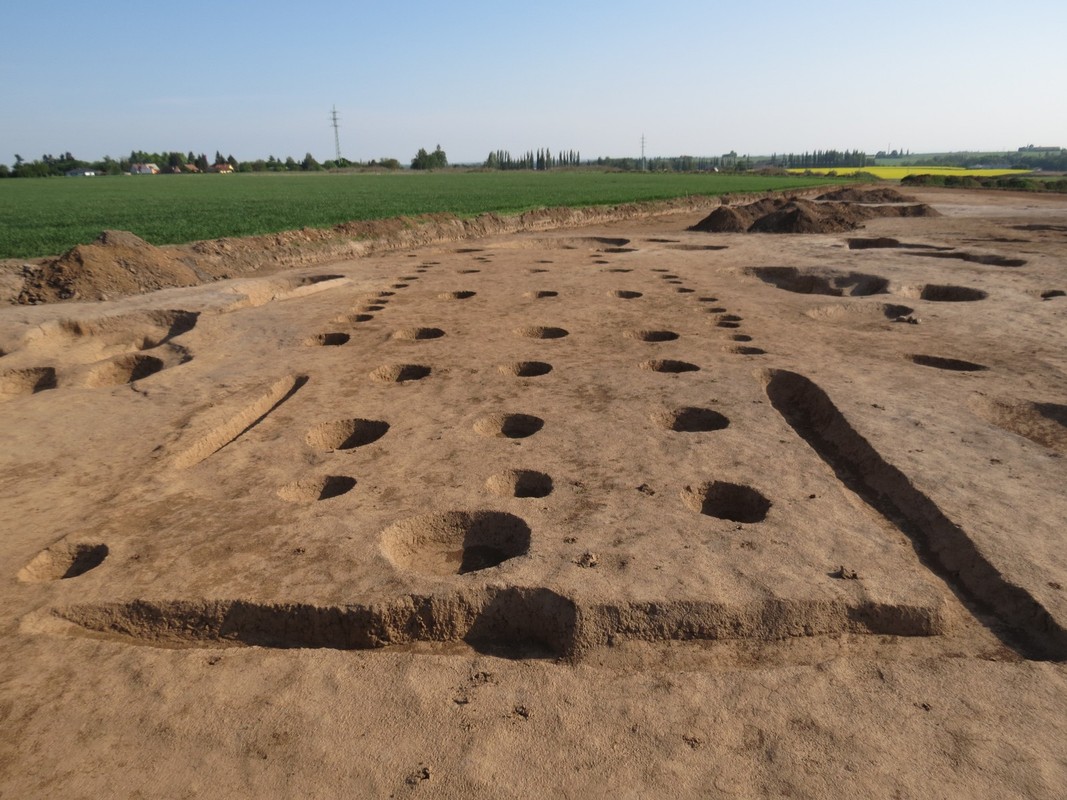Discovery of a seven thousand year old trading station by archaeologists from the University of Hradec Králové

Archaeologists working at the site of the future D11 motorway north of Hradec Králové made a unique discovery. They found a seven thousand year old trading station with stone tools. “The concentration of artefacts such as stone knives, axes and spearheads is very high,” commented Associate Professor Radomír Tichý from the Philosophical Faculty.
The survey, conducted en route of a new stretch of the D11 motorway from Hradec Králové to Jaroměř, started in the Spring of 2017 and is now in its second stage. “The first stage of our survey started in the Summer of 2017; given the size of the construction site, this was one of the largest surveys conducted in the Czech Republic. The survey was extremely demanding because the investor decided that the survey would be conducted along the entire route of the future motorway from Hradec Králové to Jaroměř. Fortunately, the second stage of the survey is not as hectic. We are now only working on sites that were previously inaccessible,” Ladislav Rytíř, an archaeologist from the Philosophical Faculty, explained.
Experts from the UHK and their colleagues from the Olomouc Archaeology Centre will now focus on the surroundings of the town of Jaroměř. The most important discovery at this site includes a seven thousand year old prehistoric settlement and numerous samples of Neolithic pottery.
“The settlement abounds in archaeological finds” Radomír Tichy from the Department of Archaeology enthused with shining eyes and a broad smile on his unshaven stubble of a face.
Archaeologists came upon the site during the first stage of the survey. According to the current working hypothesis, the settlement may have been a trading station. “The tools discovered on-site are made from stone that can only be found in the Jizera Mountains, and parts of Poland and Slovakia,” explained Mr Rytíř.
“We have identified the stone used in all ground axes as Pojizeri-type metabasite. This goes on to show how useful this particular type of stone appeared to be in this area during the Neolithic period. The materials used in the production of flake tools, sometimes also known as flint knapped tools, originate from a wide range of different sources. They were imported from Poland. Obsidian was brought in from both Upper and Lower Hungary. We have therefore come to believe that in the Neolithic Age, every settlement also acted in part as a trading station.
We are delighted that our survey managed to describe a Neolithic trading station in such detail and extent,” Professor Tichý added.
The motorway construction site is 25 kilometres long and 60 meters wide and represents a highly valuable archaeological site. So far, archaeologists managed to collect finds ranging from the Prehistoric Age to the Modern Age; the oldest objects date back to the Neolithic period. Other finds include houses and burial sites from the Bronze Age, an Early Middle Age cemetery or the remains of a field fortification from the 18th century or the Prussian-Austrian War of 1866. “We have completed, conserved, treated and analyzed the find and we have started drafting a survey report, which will summarize all the data discovered throughout our survey and follow-up research and it will be deposited in the archive of the Institute of Archaeology in Prague. Our finds will be stored by the East Bohemian Museum in Hradec Králové, where they will be made available for other researchers,” said Mr Rytíř •

